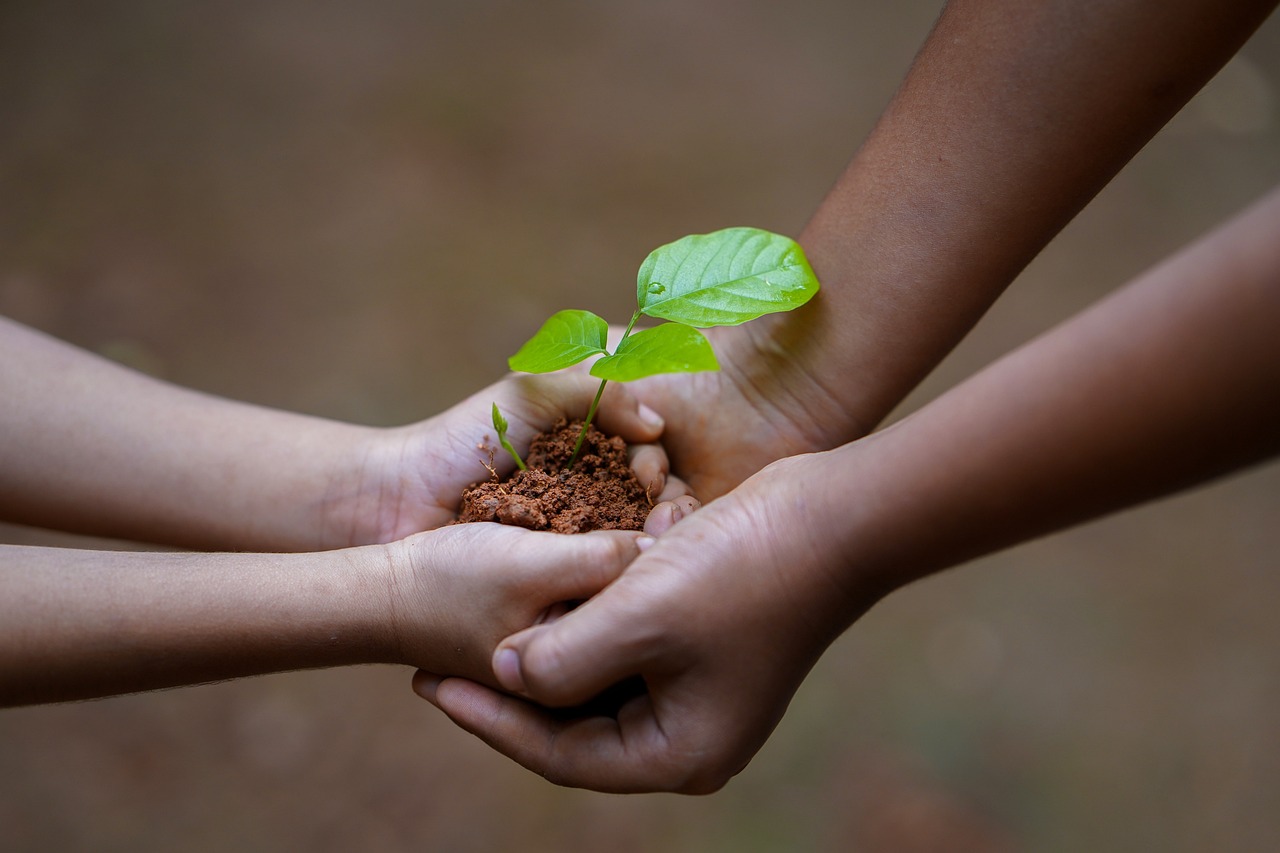The Giving Tree teaches us that unconditional love and selflessness are central to meaningful relationships. It emphasizes the importance of giving without expecting anything in return, showcasing the beauty and complexity of love, sacrifice, and personal growth throughout life.
The Giving Tree, a beloved children’s book by Shel Silverstein, tells the story of a tree and a boy. Their relationship evolves over time, reflecting the stages of life and the nature of giving. The tree represents unconditional love and generosity, while the boy embodies human need and desire. This poignant tale offers profound lessons about life, love, and the sacrifices we make for those we care about.

Published in 1964, The Giving Tree has inspired readers for generations. Its simple yet powerful narrative resonates with audiences of all ages. The tree’s willingness to give everything it has to the boy poses important questions about the balance between generosity and self-care. This story invites us to reflect on our relationships and the dynamics of giving and receiving.
Understanding the Relationship Between the Tree and the Boy
At the heart of The Giving Tree is the relationship between the tree and the boy. This relationship evolves dramatically throughout the story. Initially, the boy enjoys playing with the tree, climbing its branches, and eating its apples. However, as the boy grows older, he becomes increasingly focused on his own desires and needs. The tree continues to give selflessly, offering everything it has to make the boy happy.
This dynamic raises important questions about sacrifice and fulfillment in relationships. The tree’s unwavering love highlights the beauty of selflessness. However, it also serves as a cautionary tale about the dangers of one-sided relationships. The boy’s continual taking without reciprocation illustrates how love can sometimes be unbalanced.

The Life Lessons Found Within the Story
The Giving Tree imparts several valuable lessons about life that can resonate with readers. Here are a few key takeaways:
- Unconditional Love: The tree’s love for the boy is unwavering. It gives without expecting anything in return, teaching us about the nature of true love.
- Selflessness vs. Self-Care: While generosity is admirable, it is essential to maintain a balance between giving to others and taking care of oneself.
- Growth and Change: As people grow, their needs and desires change. Understanding this evolution is crucial for nurturing relationships.
- The Consequences of Taking: The boy’s actions illustrate how one-sided relationships can lead to dissatisfaction and emptiness.
Impact on Readers of All Ages
The impact of The Giving Tree extends beyond childhood. Adults often revisit its themes as they navigate their own relationships. The simplicity of the story allows for various interpretations, making it relatable across different life stages. Readers reflect on their experiences of love, sacrifice, and what it means to truly give.
Children learn about empathy and kindness through the tree’s actions. They see how love can manifest in many forms. Meanwhile, adults may recognize their own tendencies to give or take in relationships. This dual perspective invites discussions about emotional health, boundaries, and mutual respect in connections.

A Deeper Look at Generosity
Generosity is a central theme in The Giving Tree that merits deeper exploration. The tree’s continuous giving can be seen as a metaphor for parental love or deep friendship. However, it also raises questions about whether endless giving is sustainable. It prompts us to consider how we can be generous while also respecting our own needs.
In many cultures, generosity is celebrated as a virtue. Acts of kindness can foster community and support among individuals. However, it is crucial to recognize when giving becomes detrimental to oneself or leads to feelings of resentment. Finding a balance between generosity and self-care is essential for healthy relationships.
As we reflect on these themes within The Giving Tree, we can better understand our own behaviors in relationships. It challenges us to evaluate how we give and receive love in our lives.
The Role of Sacrifice in Relationships
One of the most poignant themes in The Giving Tree is the concept of sacrifice. The tree gives everything it has to the boy, often at great personal cost. This portrayal raises important questions about the role of sacrifice in our relationships. While sacrifice can be a beautiful expression of love, it can also lead to feelings of depletion and neglect.

Sacrifice, when done selflessly, can strengthen bonds between individuals. However, it is essential to understand the implications of sacrificing too much. When one party consistently gives while the other only takes, the relationship can become unbalanced. This imbalance often leads to resentment and emotional exhaustion.
Understanding Healthy Sacrifice
Healthy sacrifice involves finding a balance between giving to others and preserving one’s own well-being. Here are some key principles to consider when evaluating sacrifice in relationships:
- Mutual Respect: Healthy relationships require respect for each other’s needs and boundaries. Sacrifices should not come at the expense of one partner’s well-being.
- Open Communication: Discussing feelings and needs openly can help partners understand when sacrifices are necessary and when they are becoming burdensome.
- Reciprocity: A balanced relationship involves give-and-take. Both parties should feel valued and appreciated for their contributions.
- Self-Care: Prioritizing one’s own needs is crucial. Taking time for self-care enables individuals to give from a place of abundance rather than depletion.
The Impact of Emotional Giving
The Giving Tree illustrates not only the physical aspects of giving but also the emotional dimension involved in relationships. Emotional giving refers to the support, empathy, and understanding we offer to others. This aspect of generosity can deeply affect our relationships and mental well-being.
Benefits of Emotional Giving
Emotional giving can foster deeper connections and enhance trust between partners. Here are some benefits of being emotionally generous:
- Enhanced Connection: Sharing emotions and being vulnerable fosters intimacy and strengthens relationships.
- Increased Trust: Consistently providing emotional support builds trust, making it easier for both individuals to rely on one another.
- Improved Mental Health: Engaging in emotional giving can lead to greater happiness and reduced stress for both individuals involved.
- Empathy Development: Practicing emotional generosity encourages empathy, allowing individuals to better understand each other’s perspectives.
The Risks of Emotional Overextension
While emotional giving is essential, it is crucial to recognize its limits. Overextending oneself emotionally can lead to significant risks, including:
- Burnout: Constantly providing emotional support without receiving reciprocity can lead to emotional exhaustion.
- Resentment: Feeling taken for granted can result in negative feelings towards the other person, damaging the relationship.
- Lack of Boundaries: Failing to set emotional boundaries can lead to unhealthy dynamics where one person dominates the relationship.
The Life Cycle of Relationships
The relationship between the boy and the tree evolves throughout The Giving Tree, illustrating the life cycle of relationships. As individuals grow and change, their connections with others also shift. Understanding this cycle is essential for nurturing long-lasting relationships.
Stages of Relationship Development
Typically, relationships go through several stages. Here are the common stages illustrated in The Giving Tree:
| Stage | Description |
|---|---|
| Initial Connection | This stage involves exploration and bonding as individuals learn about each other’s interests and values. |
| Growth | As individuals become more comfortable, they deepen their connection through shared experiences and emotional support. |
| Challenges | Difficulties may arise as needs change. Communication becomes crucial during this phase to address concerns. |
| Maturity | The relationship reaches a stable state where both individuals feel secure and valued, leading to mutual growth. |
The Giving Tree serves as a reminder that relationships evolve over time. Understanding this evolution can help individuals navigate changes more effectively. Recognizing when to adjust expectations or communicate needs is vital for maintaining healthy relationships throughout life’s journey.
Lessons on Personal Growth
The Giving Tree not only explores the dynamics of relationships but also emphasizes the importance of personal growth. The evolution of the boy throughout the story reflects how individuals change over time. As we navigate through life, our experiences shape us, influencing our values, priorities, and relationships.
The Importance of Self-Discovery
Self-discovery is a crucial aspect of personal growth. Understanding who we are allows us to engage authentically in our relationships. In The Giving Tree, the boy’s journey is one of exploration, both externally and internally. Here are some key components of self-discovery:
- Reflection: Taking time to reflect on our experiences helps us understand our feelings and motivations.
- Exploration: Engaging in new activities or pursuing interests can lead to a deeper understanding of ourselves.
- Feedback: Seeking feedback from trusted friends or mentors can provide valuable insights into our strengths and areas for improvement.
- Adaptability: Being open to change and willing to adapt is essential for personal growth.
Navigating Life’s Transitions
Life is full of transitions that can impact our development. The boy in The Giving Tree experiences various stages—from childhood innocence to adult responsibilities. Each stage brings different challenges and opportunities for growth. Here are some common life transitions that individuals face:
- Childhood to Adolescence: This transition often involves discovering identity and grappling with peer influences.
- Adolescence to Adulthood: Young adults face decisions about career paths, relationships, and personal values.
- Adulthood to Parenthood: Entering parenthood brings new responsibilities and shifts priorities significantly.
- Midlife Changes: Many individuals reassess their goals and achievements during midlife, seeking fulfillment and purpose.
Each transition presents unique challenges and can lead to significant personal growth. Embracing these changes is essential for developing resilience and adaptability.
The Balance Between Giving and Receiving
The Giving Tree teaches an important lesson about the balance between giving and receiving. While generosity is vital in relationships, it is equally important to allow others to give to us. This reciprocal exchange fosters healthier connections and emotional well-being.
The Benefits of Allowing Others to Give
Allowing others to contribute to our lives can enhance relationships in several ways:
- Building Trust: When we accept help or support, we create an opportunity for trust to flourish within the relationship.
- Encouraging Reciprocity: Relationships thrive when both parties feel valued. Allowing others to give fosters a sense of mutual respect.
- Strengthening Bonds: Sharing experiences, whether through giving or receiving, deepens emotional connections.
- Promoting Empathy: By accepting help, we encourage empathy in others, reinforcing the importance of support in relationships.
Recognizing Our Own Needs
Understanding our own needs is crucial for maintaining balance in relationships. Just as the tree gives generously, we must recognize when it is appropriate to ask for support. Here are some tips for identifying and communicating your needs:
- Acknowledge Your Feelings: Take time to assess how you feel within the relationship. Are you feeling overwhelmed or unsupported?
- Identify Specific Needs: Clearly define what you need from the other person. Is it emotional support, practical help, or simply companionship?
- Communicate Openly: Share your feelings and needs with the other person. Honest communication fosters understanding and connection.
- Set Boundaries: Establish boundaries that protect your well-being while allowing for healthy interactions with others.
By recognizing and articulating our needs, we create opportunities for deeper connections and healthier relationships. This balance enhances our overall emotional health and supports personal growth.
The Symbolism of the Tree
The tree in The Giving Tree serves as a powerful symbol of love and sacrifice. Its unwavering commitment to the boy represents the depth of parental love, friendship, and selfless giving. Understanding this symbolism can shed light on the broader themes of the story.
The Tree as a Metaphor for Unconditional Love
The tree’s actions exemplify unconditional love—giving without expecting anything in return. This type of love can be seen in various relationships, including those between parents and children or close friends. Here are some aspects of unconditional love represented by the tree:
- Sacrifice: The tree willingly sacrifices its resources for the boy’s happiness, illustrating selflessness in love.
- Endurance: The tree endures various changes in the boy’s life, showcasing loyalty through all circumstances.
- Nurturing Growth: Just as a tree provides shelter and nourishment, true love supports growth and development in others.
The Tree’s Transformation
The physical transformation of the tree throughout the story mirrors the changes individuals experience over time. As the tree gives more of itself, it becomes smaller and less vibrant. This transformation serves as a reminder of the toll that one-sided giving can take on our well-being.
The symbolism of the tree encourages readers to reflect on their own lives. It asks us to consider how we can be both generous and mindful of our own needs, striking a balance that nurtures both ourselves and our relationships with others.
Reflecting on the Lessons of The Giving Tree
The Giving Tree offers timeless lessons on love, sacrifice, and the complexities of human relationships. As we have explored, the story encapsulates essential themes that resonate with readers of all ages. It challenges us to consider how we interact with those we care about and the impact of our actions on our emotional well-being.
One of the most significant lessons from the book is the importance of balance in relationships. The tree’s unconditional love for the boy teaches us about the beauty of giving. However, it also serves as a cautionary tale about the potential pitfalls of one-sided relationships. We must be aware of our own needs and ensure that we do not lose ourselves in the act of giving.
Exploring Relationships Through Different Lenses
The Giving Tree can also be interpreted through various lenses, each offering unique insights into human behavior:
- Parental Love: The tree’s unwavering support mirrors the sacrifices many parents make for their children. It highlights the deep emotional connections that often characterize these relationships.
- Friendship: The dynamics between the tree and the boy can also reflect friendships where one person often gives more than they receive, prompting discussions about reciprocity and mutual support.
- Self-Reflection: Readers are encouraged to reflect on their personal relationships. Are they more like the tree or the boy? This self-examination can lead to meaningful changes in how we engage with others.
Encouraging Open Dialogue
The themes presented in The Giving Tree encourage open dialogue about giving and receiving in relationships. It is essential to foster conversations around emotional needs, boundaries, and expectations. By discussing these topics, individuals can cultivate healthier connections, ensuring that both parties feel valued and supported.
Here are some strategies for fostering open dialogue:
- Create Safe Spaces: Establish environments where individuals feel comfortable sharing their thoughts and feelings without judgment.
- Practice Active Listening: Listening actively to others fosters understanding and empathy, allowing for more profound connections.
- Acknowledge Feelings: Validating emotions can help individuals feel heard and appreciated, creating a strong foundation for discussion.
- Encourage Vulnerability: Sharing personal experiences and fears can deepen trust and strengthen relationships.
Final Thoughts
The Giving Tree serves as a powerful metaphor for the complexities of love and sacrifice in human relationships. Its narrative compels readers to reflect on their connections with others, urging us to find a balance between giving and receiving. As we navigate our own lives, we must remember that healthy relationships are built on mutual respect, empathy, and understanding.
Ultimately, this timeless tale reminds us that while generosity is a beautiful quality, it should not come at the expense of our well-being. We are encouraged to nurture ourselves even as we care for others. By doing so, we can engage in relationships that are not only fulfilling but also sustainable in the long run.
The lessons from The Giving Tree resonate with all of us, no matter our age or stage in life. It encourages personal growth, self-reflection, and the courage to communicate openly. As we embrace these teachings, we can foster richer, more meaningful connections with those we cherish.
In conclusion, The Giving Tree is not merely a children’s story; it is a profound exploration of love’s complexities. Through its simple yet powerful narrative, it invites us to examine our values and behaviors in our relationships and strive for a greater understanding of what it means to truly give and receive in life.
